#weiße frau
Text
Interview with a Ghost, or: Royal Ghost Hunters

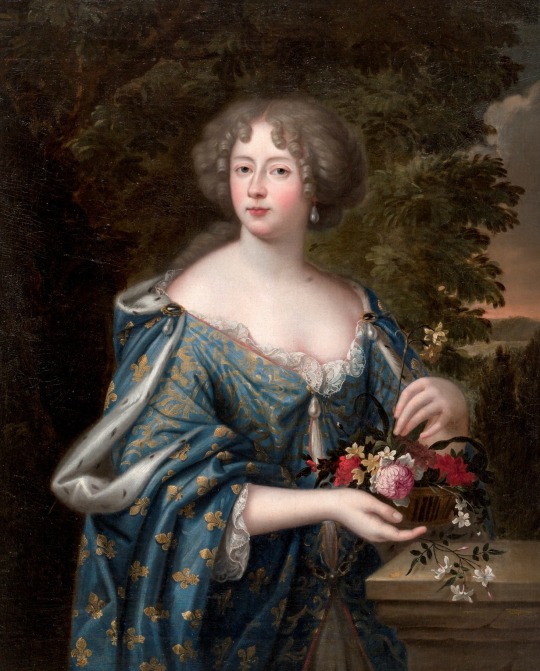

Left to right: ghost hunters Karl Ludwig I. Elector Palatine (1617–1680), his daughter Liselotte von der Pfalz, Duchess of Orleáns (1652–1722), and Friedrich Wilhelm I., King in Prussia (1688–1740).
Since it’s Halloween, I thought I should make a themed post! And what better topic to choose than ghosts? But more often than not, these restless souls wandering between the worlds, preferably at night, are of an entirely earthly origin— especially when bedsheets are involved.
Haunted more by a family history of trouble and turmoil than actual ghosts, let’s look at three Stuart descendants and their brush with the allegedly supernatural:
Karl Ludwig, Elector Palatine and the Ghost of Chain Alley
This first story of a successful ghost hunt concerns Karl Ludwig, Elector Palatine, and was passed from Liselotte von der Pfalz to her much younger half-sister Luise on 22 February 1721.
Zu Heidelberg, ehe Ihr geboren, wurd ein groß Geschrei von einem Gespenst, so alle Nacht mit feurigen Augen und großem Geplärr durch die Kettengaß ging. Ihro Gnaden, der Kurfürst, unser Herr Vater, ließ dem Gespenst aufpassen und fangen; da ertappte man drei oder vier Studenten, so Franzosen waren. — Einer, so Beauregard hieß und des Generals Balthasar Schwager war, der war das Kalb, und die andern, ich glaube Monsieur Dangeaus Bruder, Coursillon, so jetzt Abbé ist, halfen zu der Musik. Wenn man die Gespenster genau examiniert, kommt als so was heraus.
From: Künzel, C. [Ed.], Die Briefe der Liselotte. Liselotte von der Pfalz, Herzogin von Orleans, München 1923, p. 442.
Translation:
[…] At Heidelberg, ere you were born, there was great upheaval on account of a ghost, which would go through the Kettengasse [literal translation: Chain Alley] each night with fiery eyes and a great clamour. His Grace the Elector our father had the ghost waylaid and captured; they caught four students, who were Frenchmen. – One of them by the name of Beauregard was the brother-in-law of General Balthasar, was the calf and the others, I believe the brother of Monsieur Dangeau, Coursillon, who is an abbé [abbot] now [among them], helped make the music. If only you examine ghosts closely, that’s what you’ll uncover.

The location of the Kettengasse in Heidelberg, via Google Maps. Conspicuously close to university buildings, it probably was not hard to guess that the ghost was a student hoax.
The Ghost of the Poisoned Princess: Liselotte Investigates

Henrietta Anne (1644–1670), first wife of Philippe, Duke of Orléans in a posthumous portrait by Peter Lely, and rather fittingly dressed in a white gown.
As can be seen from the story relayed to her half-sister, her father's no-nonsensical attitude set the tone for Liselotte’s own approach to ghostly apparitions— some stories, such as the ghost wandering the conspicuously aptly named Kettengasse, just seem too good to be true.
While not directly involved in the ghost hunt itself, Liselotte, a no-nonsensical person who did not believe in organised religion at large and superstition in particular, remained unphased when a ghostly apparition quickly identified as the wronged and restless soul of her husband’s first wife Henrietta Anne of England started to appear on occasion in a specific spot in the gardens of her residence, Saint Cloud palace. Liselotte, while occasionally chiming in on the rumours that Henrietta Anne may have been poisoned by the Chevalier de Lorraine, her husband’s favourite and her personal arch-nemesis, would have nothing of it and even interviewed the ghost in person:
Es gieng vor vielen Jahren ein Geschrey zu St. Cloud, daß feue Madame Geist im Garten bei einem Brunnen gienge, wo sie sich in der größten Hitze aufgehalten, den der Ort ist sehr kühl. Als des Marêchal de Clerembeaut Lakey Abends wie die Sonne untergegangen war, an dem Brunnen gieng Wasser zu schöpfen, sahe er etwas weisses an dem Brunnen sitzen ohne Figur, das stehet gegen ihm auf, und wird noch einmal so groß; der arme Lakey erschrack und lief weg, wie er aber weiter kam, sagte er: er hätte Madame gesehen, wurde tod krank und starb, der aber damals Capitaine du Chateau war, und wohl denken konnte, daß man dahinter stecken müste, gieng etliche Tage nachher auch zu dem Brunnen, und wie er das Gespenst gehen sahe, drohete er dem Gespenst 100 Prügel zu geben, wofern es nicht sagte, wer es wäre. Das Gespenst sagte: ah! Monsieur de Lastera, ne me faites point de mal, je suis la pauvre Philippinette. Diese war ein alt Weib aus dem Dorfe von 77 Jahren, die keinen Zahn mehr im Maule hatte und böse Augen, einen feuerroten Bord darum, ein groß Maul, eine große Nase; Summa se war abscheulich. Man wollte sie in ein Gefängnis führen, ich bat aber für sie. Sie kam mir zu danken; ich sagte: quelle rage Vous tient de faire l’esprit au lieu de Vous aller coucher? Sie fieng an zu lachen und sagte: je ne puis avoir regret à ce que j’ai fait; à mon âge on dort peu. Il faut bien avoir quelque petite chose pour reveiller l’esprit. Tout ce que j’ai fait dans ma jeunesse ne m’a tant rejouï, que de faire l’ésprit. J’étois bien sure, que ceux qui n’auroient pas peur de mon drap bla[n]c, auroient peur de mon visage. Ceux qui avoient peur, faisoient tant de grimaces, que j’en mourrois de rire. Ce Plaisir nocturne me payoit de la peine d’avoir porté la hotte toute la journée. Den 17ten Novembr. 1716.
From: Veltenheim, August F. von [Ed.], Anekdoten vom Französischen Hofe vorzüglich aus den Zeiten Ludewigs des XIV. und des Duc Regent: aus Briefen der Madame d'Orleans Charlotte Elisabeth, Herzog Philipp I. von Orleans Witwe Welchen noch ein Versuch über die Masque de Fer beigefügt ist, Strassbourg 1789, p. 291 f.
Translation:
Many years ago at St. Cloud, there was a rumour that the ghost of the late Madame [Henrietta Maria of England, first wife of Philippe d’Orléans] was pacing beside a well where she had dwelt in the greatest heat, because this place is exceedingly cool. When a lackey of the Marshal de Clerembeaut went to the well one evening to draw water, he saw something white and shapeless sit beside the well, which, facing him, rose and doubled in size; the poor lackey was startled and ran away, and as he got away, said that he had seen Madame, [then] fell fatally ill and died. But the person who was Capitaine du chateau [steward of the palace] at the time, having decided that one should ascertain what was behind all this, afterwards went to the well for several days as well, and upon seeing the ghost, threatened them with 100 lashes if they would not tell him who they were.
The ghost said: “Ah! Monsieur de Lastera, do me no harm, I am the poor Philippinette.” She was an old woman from the village who was 77 years old and had not a tooth left in her mouth and bloodshot eyes with red circles around them with a big mouth and a big nose and was therefore, all things considered, hideous.
They wanted to take her to prison, but I interceded on her behalf. She came to thank me; I said: “What came over you to try and be funny instead of going to sleep?”
She started to laugh and said: “I cannot regret what I have done; at my age, one sleeps little. One has to have a little something to raise one’s spirits. Everything that I have done in my youth has not delighted me as much as playing the spirit. I was quite certain that those who would not be afraid of my white sheet would be afraid of my face. Those who were afraid made such grimaces that I was dying of laughter. This nocturnal pleasure repaid me for the strain of having carried the hood all day.”
17 November 1716.
It's quite telling that she's punning on the phrase faire de l'ésprit, i.e. trying to be witty or funny (with ésprit also meaning spirit). Clearly, she was more amused than annoyed by Philippinette's prank, which stands in stark contrast to the next ghost hunter:
Friedrich Wilhelm I. in Prussia vs. 3 (!) White Ladies
Skipping a few generations down the family tree to the grandson of Liselotte’s favourite aunt Sophie von Hannover, for Friedrich Wilhelm, father of Frederick the Great, King in Prussia, the ghostly appearance of a woman in white announcing his father’s death in 1713 was less accidental than expected. Since generations, it was rumoured that the apparition of the ghostly figure known as the White Lady announced the death of a member of the Hohenzollern family. To name but some of the most prominent recent deaths in the family, the White Lady was rumoured to have been spotted just before the death of his grandmother Louise Henriette of Orange in 1667, grandfather Elector Friedrich Wilhelm in 1688 and their infant son Wilhelm Heinrich in 1649.
The ghost known as the White Lady was long rumoured to have been the unhappy ghost of a woman called Kunigunde von Orlamünde, a 14th century widowed noblewoman who was said to have fallen in love with a much younger man and member of the Hohenzollern family, Albrecht der Schöne [Albrecht the Beautiful]. Albrecht, or so the story goes, wanted to marry her, but faced fierce opposition from his parents, prompting him to say that four eyes stood in the way of their happiness. Kunigunde, misinterpreting her lover’s words, proceeded to murder her two children from her first marriage, thinking they were the two pairs of eyes Albrecht had alluded to. Having murdered her children, the penitent, lovestruck Kunigunde supposedly attached herself permanently to Albrecht’s family after her death. Research done in the 19th century however reveals that Kunigunde was childless, and that her only relationship with Albrecht was one of business, having bought land from him on which she built Himmelthron abbey, as whose abbess she died in 1382.
Another possible inspiration for the White Lady, particularly when seen in the Stadtschloss in Berlin, was Anna von Sydow, mistress of Elector Joachim II of Brandenburg (1505–1571), who died unhappily after having been incarcerated by her lover’s son and successor, to whom she is said to have appeared in her ghostly form to announce his approaching passing.

Epitaph of Kunigunde von Orlamünde as abbess of Himmelthron and a portrait said to depict Anna von Sydow, two women whose names are tethered to the myth of the White Lady of the Hohenzollern family.
Whether there is one definitive inspiration for the White Lady or not, the apparition visiting Friedrich I. on his deathbed was however of an altogether worldlier nature; this White Lady’s name was Sophie Luise zu Mecklenburg-Schwerin— and Friedrich’s third wife.

Friedrich I., King in Prussia.
For some time prior to Friedrich’s death, Sophie Luise’s mental health had deteriorated to such a degree that the Queen was considered insane by contemporaries. What had initially begun with a journey to finding personal religious fulfilment in Pietism and fights with Friedrich over which (Protestant, naturally) denomination was the ‘right’ one, developed into depression and at last, periods of aberration and complete disconnect from the world around her, prompting Friedrich to seek at least spatial separation from her.
One night in the months leading up to his death, Friedrich awoke in his chamber in the Stadtschloss to find a woman with loose hair dressed in nothing but her white, bloodied nightclothes standing over him, and addressing him with reproaches. The King, naturally frightened and thinking the White Lady herself had come to take him away screamed, alerting his household. The attendants thus alarmed and rushing to the scene quickly identified the intruder as none other but the Queen, who had escaped from her quarters.
Wholly unaware of what she had done when asked about the incident later, Sophie Luise had broken a glass door on the way to her husband’s quarters and cut herself on the shards, causing the blood stains on her clothing.

Sophie Luise von Mecklenburg-Schwerin, Queen in Prussia (1685–1735).
No longer tenable at the Prussian court after this episode, Sophie Luise, presumably by the authority of the Crown Prince Friedrich Wilhelm, was sent back to Mecklenburg to live with her mother mere weeks before her husband died; but Sophie Luise’s departure did not mean that Friedrich Wilhelm had put an end to the White Lady for good.
Reports are somewhat murky, but there appear to have been several other, less tragically accidental and decidedly more mean-spirited White Ladies in 1713 Berlin following the death of Friedrich I., which prompted the newly-minted Friedrich Wilhelm I. to act and, hopefully once and for all, banish the White Lady to the realm of legends.
Two men were put into the stocks and (accounts vary here) possibly whipped, one of them a young kitchen hand and the other a soldier. Either they were two genuine pranksters caught red-handed (or rather, white-gowned) in the streets of Berlin, or Friedrich Wilhelm had the men selected at random to make an example of two people he considered expendable to deter any would-be White Ladies.
Whatever the new King’s motivations, there are no reports of the ‘real’ White Lady having visited Friedrich Wilhelm at his own death in 1740; so it worked— at least for a while. By the end of the century, the White Lady was back with the Hohenzollern family and according to legend, even took it upon herself to chill the bones of Napoleon when he visited Bayreuth Palace, associated with the Hohenzollerns, in 1812.
Reports of the White Lady continue into the 20th century; she was last sighted on 31 January 1945 in Berlin, three days before the Stadtschloss was reduced to rubble under allied bombardments.
Perhaps, with the rightfully controversial reconstruction of the Stadtschloss (not to speak of the museum housed within, but I digress) over the last few years, she will return, her old haunting-grounds having been restored?
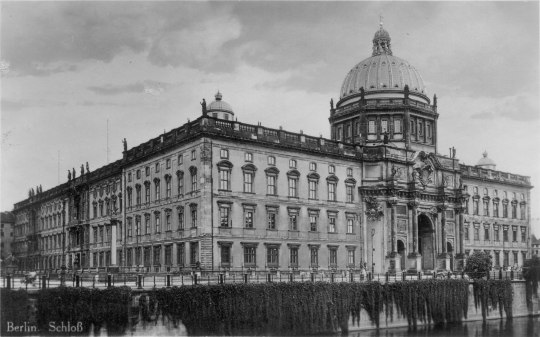
Photo of the north-eastern front of the Stadtschloss in the 1920s.

Photo of the north-eastern front of the Stadtschloss of September 2022, by Frank Schulenburg.
At present, it does not look like it. When Prinz Ferfried von Hohenzollern died about a month ago, there were no reports of the White Lady having made an appearance. But who knows? Perhaps on a dark autumnal night, as the street lanterns cast a sparse glimmer over the river Spree, and not a light shines from the windows of the new Stadtschloss, you might be (un-)lucky enough to spy her...?
...But always remember that if you do, you're most likely to have encountered a modern-day Philippinette.
Happy Halloween, everyone!
#halloween#spooky season#history#17th century#18th century#ghost stories#ghosts#weiße frau#white lady#karl ludwig von der pfalz#liselotte#liselotte von der pfalz#friedrich wilhelm i#friedrich i#sophie luise von mecklenburg-schwerin#kunigunde von orlamünde#anna von sydow#saint cloud#berlin#stadtschloss#myths and legends#german history#french history#my history posts
71 notes
·
View notes
Text
49-Euro-Ticket-Tour: Altmühltal - Burg Wellheim
Ein Tag im Herbst 2023 – er verspricht sonnig zu werden, mindestens aber trocken. Endlich haben sie die Verkehrsminister auf die Fortführung des 9-Euro-Tickets geeinigt, allerdings ist es nun ein 49-Euro-Ticket. Für mich ist das immer noch eine Ersparnis, da meine Monatskarte zur Arbeit schon teurer währe. Für viele Bürgergeld-Empfänger ist das allerdings eine Menge Geld.
Meine erste Tour soll…

View On WordPress
#coffeenewstom#49-Euro-Ticket-Tour#Altmühl#Altmühltal#bân Galâ#Biesenhard#Coffeenewstom#Eichstätt#Graf von Helfenstein#Helfenstein#Metzgerei Schieber#Rebdorf#Schlossmirl#Wasserzell#Weiße Frau#Wellheim#Wiggerla#Wiggerlawerg#Wiggerlawerg-Felsen#Willibaldsburg
0 notes
Text
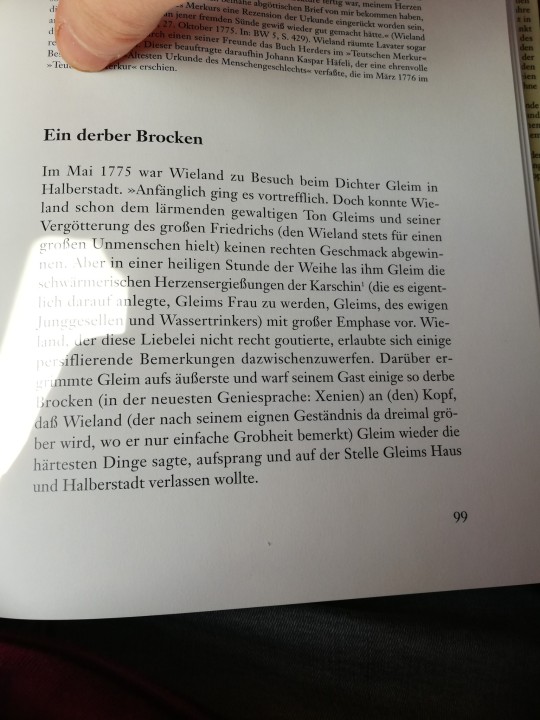

Ob sie sich gegenseitig 'Hurensohn' genannt haben?
#christoph martin wieland#Dem Wieland seine Frau#Ich weiß ihreb#Namen nicht#Sophie Dorothea Gleim#Deren Namen kenn ich. Meine Ente ist nach ihr benannt#Ach ja und#johann wilhelm ludwig gleim#german stuff#deutsches zeug#18th century#gleim
3 notes
·
View notes
Photo

Beauty Sleeping on a Banana Leaf by Yin Tang
#art#artwork#kunst#kunstwerk#yin tang#artist#künstler#asian art#asiatische kunst#woman#frau#sleeping#schlafen#laying#liegen#relaxing#entspannen#nature#natur#plants#pflanzen#leave#blatt#banana leaf#bananenblatt#black and white#schwarz-weiß
4 notes
·
View notes
Text
Ich frage mich warum 'Lisa, 18, war in Australien' so vielen ein Dorn im Auge war, dass gefühlt jeder zweite Post auf Jodel sich darüber das Maul zerrissen hat, das war jetzt wirklich nichts woran man sich in dem Maße abarbeiten muss-


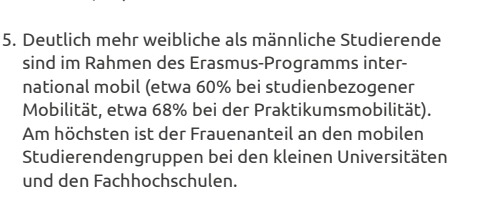
Oh.
Frauen und Mädchen hatten wohl mal wieder die Dreistigkeit sich für etwas zu begeistern wo Männer nicht mithalten konnten.
#Ich weiß ich weiß kontroverse These.#aber ihr denkt doch nicht dass wenn das bei beiden Geschlechtern gleich beliebt wäre ihr je ein Ende hören würdet davon#wie Ben (19) seine gesamte Au-Pair Gastfamilie vor der immer größer werdenden tödlichen Todesspinne des Todes gerettet hat#aber zusammen mit Pferdemädchen + fast allen kreativen Hobbys + jeglichen Videospielen die bei jungen Mädels beliebt sind#kann ich nicht anders als mich zu fragen ob das so ein negativer Stereotyp wäre wenn es mehrheitlich Jungs wären die ins Ausland gingen#und dann davon lange lange erzählen würden.#kontroverse These 2: Ich höre meinen Freunden gerne zu und freue mich wenn sie etwas begeistert#und ja manche Menschen übertreiben es oder spielen sich ein bisschen auf. Aber ich finde so etwas wird eindeutig schneller#Frauen zum Vorwurf gemacht als Männern. bzw. wenn Männer was sagen hat man das für wichtig und ernst zu halten.#so dass es keinen Sinn macht dass der Stereotyp für so etwas so ausgeprägt weiblich verortet wird.#und wenn ich diese Statistik sehe dann wirkt das auf mich eher wie a) Neid und b) Ärger dass sie einer Frau zuhören müssen.#(statt dass sie mit irgendwas sinnlosem angeben dürfen und Weibchen ehrfurchtsvoll an ihren Lippen hängt.#sorry Stephan aber du hast halt nach dem Abi nur 5 Monate Call of Duty gezockt. Da höre ich lieber Lisa die in Australien war.)#BundesTag#cw misogyny
27 notes
·
View notes
Text

10 notes
·
View notes
Text
thinkin bout meine frau again . i need to be sedated
#[ren]#[bunny posting]#GOTTTTTT#sie ist so hübsch#einfach das hübscheste mädchen der welt#und sie ist so leidendschaftlich für ihre iteressen und ihre shiffe!!!!#es ist so süß#ich liebe jeden kleinen teil von ihr so sehr#ich bin voller hingabe und bewunderung für sie#ich liebe es wenn sie in meinem posteingang auftaucht und über den nueusten rendog-stream schwärmt#es ist einfach so liebenswert zu sehen wie sie von ihrem dummen streamer-typen so begeistert ist#gott. meine hascha ist so süß#weißt du was lustig ist ? in letzter zeit sehe ich kaninchen anders#ich habe angefangen sie mit meiner frau in verbindung zu bringen#es ist lustig weil ich früher tatsächlich angst vor kaninchen hatte (wass dumm ist ich weiß aber trotzdem)#aber jetzt sehe ich sie nur noch denke an meine frau und habe keine angst mehr :-)#ok ramble over . moral of the story i love meine frau a lot ^_^
2 notes
·
View notes
Photo

Many An Evening She Rose To The Place, c1930 by William Heath Robinson (1930, )
#art#artwork#kunst#kunstwerk#william heath robinson#mythical art#mystische kunst#fantasy#fantasie#fairytale#märchen#evening#abend#black and white#schwarz-weiß#woman#frau#imagination#vorstellung#magical#magisch#art prints#kunstdrucke#mythical creature#mystische kreatur#illustration
2 notes
·
View notes
Text

"Hitchcock und Frau Wernicke" (2010)
#die qualität ist schlecht ich weiß <3#let's just say it's the aesthetic :3#anyway#HIM#er ist so schön und süß i just wanna kiss him on the forehead :v#such a cutie#look at him w/ flowers. ain't it wonderful?#felix stark#tatort berlin#tatort#ep: hitchcock und frau wernicke#photo edit#fan edit#mine*#babygirl felix#💜
12 notes
·
View notes
Text
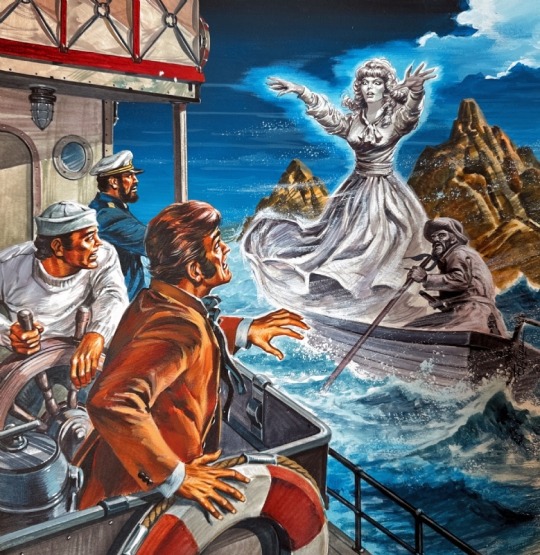
Spuk Geschichten 164 - Die weiße Frau vom Teufels-Fjord
Art by Ertugrul Edirne
Source
2 notes
·
View notes
Video
La ciclista by Pascal Volk
#Europe#Germany#Berlin#Berlin Charlottenburg-Wilmersdorf#City West#Tauentzienstraße#Charlottenburg#Mittelstreifen#Street Photography#Radfahrerin#ciclista#cyclist#Frau#woman#mujer#ARTinBW#schwarz#weiß#black#white#Black and White#schwarzweiß#S&W#B&W#bnw#blanco y negro#blanco-negro#Wide Angle#Weitwinkel#gran angular
3 notes
·
View notes
Text
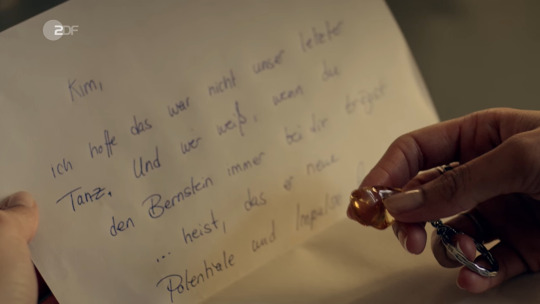
Ich korrigiere nicht die Rechtschreibung, ich korrigiere nicht die Rechtschreibung, ich korrigiere nicht die Rechtschreibung
#soko leipzig#k watches soko leipzig#ich weiß ja nicht aber für mich sieht das auch so aus als hätte das ne frau geschrieben und nicht ein mann#aber was weiß ich schon
0 notes
Photo

NACHHALTIGE KERZE | KURVIGE Frau | Rapswachs | Kokoswachs | weiß | mit echten Rosenblättern | Rosenduft
SUSTAINABLE CANDLE | CURVY woman | rapeseed wax | coconut wax | white | with real rose petals | rose scent
Link:
https://www.etsy.com/de/listing/1229493263/nachhaltige-kerze-o-kurvige-frau-o?click_key=d538a2ded39fd6daf891983943577daef19055b4%3A1229493263&click_sum=858103f5&ref=shop_home_active_1&pro=1
#nachhaltigkeit#Kerze#Kerzen#kurvig#frau#raps#kokos#weiß#rose#rosen#rosenduft#duft#duftkerze#körper#torso#sustainable#candles#woman#rapeseed#coconut#white#rose petals#roses#rose scent#scent#scented candles#etsy#small etsy shop#etsybusiness
0 notes
Text
Meine Tante ist ja bekanntlich sehr für alles mittelalterliche zu begeistern. Und für alles, was halt auch nur entfernt historisch aussieht.
Wir pflügten vor ein paar Jahren also mal wieder zusammen über einen lokalen Mittelaltermarkt. Das Highlight: ein Gitterkäfig, der mit einer Art Kran, Marke Eigenbau aus Europaletten, über ein kleines Lagerfeuerchen geschwenkt wurde, zur Demonstration einer Hexenverbrennung. Für ein kleines Erinnerungsfoto konnte man selber in den Käfig steigen- because nothing says honoring the memory of hundreds of people who got unjustly murdered like posing with the method of execution.
Jetzt zur Einordnung: meine Tante sieht aus, als hätte man Severus Snape eine Jahreskarte für's Solarium sowie 'ne Packung Bleach besorgt und ihn dann wie eine Neanderthaler-Wachsfigur aus dem örtlichen Naturkundemuseum gekleidet. Auf deutsch: der Vergleich mit einer Hexe bietet sich an.
Der.... Betreiber? Besitzer? ....der Betreuer der Scheiterhaufen-Käfig-Konstruktion sah sie vorbeilaufen, und sprang uns fast entgegen. Ob meine Tante nicht mal in den Käfig steigen wollte, fragte er. Sie würde da so gut reinpassen. "Wie bitte?" sagte meine Tante. Und, bevor er antworten konnte: "Ja."
Gesagt, getan. Tante steigt in Käfig, Käfig wird (mit ausreichend Abstand etc etc) über Feuer geschwenkt. Alle Beteiligten sind begeistert. Tante hat die Zeit ihres Lebens. "Woah, eine echte Hexe!" höre ich ein Kind neben mir sagen. Es ist ein kleines Mädchen mit blonden Bauernzöpfen, das vom Aussehen her in einem Vollmilch-Werbespot mitspielen könnte. Ich muss lachen. "Was hat die gesagt?" keift meine Tante aus ihrem Käfig herab. "Nichts, nichts" beteure ich. Das Kind legt jedoch gleichzeitig nach. "Die Hexe brennt ja gar nicht!" ruft sie. "Das Feuer muss höher!".
"Was?!" keift es wieder von oben, "WAS??". Das Mädchen lacht, dreht sich um und läuft zurück zu ihren Eltern. Im Käfig tobt es währenddessen. Der Scheiterhaufenbetreuer setzt meine Tante wieder auf den Boden und entlässt sie in die Freiheit. Sie bedankt sich herzlich, und nimmt praktisch sofort die Verfolgung des Kindes auf. Ich überlege kurz, einfach so zu tun als würde ich diese Frau nicht kennen, entscheide mich dann aber dafür, Schadensbegrenzung zu betreiben. Also hinterher, I fucking guess.
Sie hat das Kind inzwischen eingeholt. Ich bekomme gerade noch mit wie sie sich zu dem Mädchen herunterbeugt, sich an's Ohr packt und dem armen Kind irgendwas zuflüstert. Ich weiß eh schon worum es geht. Es ist ihr Hexenohr, bei dem ihr eine herausgerissene Creole das Ohrloch gespalten hat. Jetzt muss sie im Wochentakt irgendwelchen wildfremden Kindern erzählen, dass man echte Hexen nur am gespaltenen Ohrläppchen erkennt. Die Frau ist irre.
Ich tauche neben ihr auf und schiebe sie auf diplomatischste Art und Weise weiter. Gerade rechtzeitig, der Vater des Mädchens ist mit einem Krug in der Hand zurückgekommen und starrt verwirrt seine aufgelöst heulende Tochter an. Die zeigt unter Tränen auf uns- toll, wir werden gleich wirklich verbrannt. Wir powerwalken vom Tatort weg. Ich fühle mich endlos schuldig, meine Tante ist zufrieden. Ein bärtiger Pirat mit Plüschpapagei bietet ihr eine Leckmuschel an, sie ist begeistert. Ich wünsche mir eine Spießerfamilie.
234 notes
·
View notes